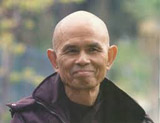Consciousness and health
Pre-natal consciousness and care
Abstract
This article owes its inspiration to many sources of light. It delineates the importance of a holistic approach to pre-natal care that takes into consideration the wellness of the mother at all levels of her being. Meanwhile, from a psychological viewpoint, it provides a profile of the developing stages in this journey through motherhood and maps a practical pathway of practices that facilitates a mother in her journey of providing optimum care for the holistic development of the child. It advocates an organic within-to-without approach, harnessing the power of aspiration, consciousness and the strength of conscious choices to render the journey a labour of love.
The following lines penned by Ella Wheeler Wilcox (1) capture the essence of this approach:
“We must not force events, but rather make
The heart soil ready for the coming, as
The earth spreads carpets for the feet of Spring.”
And the lines that follow capture the essence of a common pattern of perception that fails to distinguish between cause and effect:
“Oft we stand
And watch the ground with anxious brooding eyes
Complaining of the slow unfruitful yield
Not knowing that the shadow of ourselves
Keeps off the sunlight and delays results.”
Seen in the context of the current topic, we understand how important it is for parents to prepare themselves psychologically in their journey of providing care. What should grasp their attention is the question, ‘When does the job of parenting begin?’
Since most parents subscribe to the view that the need for good parenting starts after birth and direct their attention and focus in caring mainly for the physical wellness of the mother during pregnancy, the importance of investing in the emotional and mental aspect of the mother’s state and its impact on the consciousness of the child is left largely discounted. What it takes to plunge into the magnificent task of tasting the joy of conscious parenting right from the pre-natal stage and its impact in moulding the consciousness of the child is a question that merits our attention. One voice, one message: when we open to the confluence of ideas that have emerged from various streams and schools of thought on the subject of pre-natal care, we understand that the deepest way to care is one which is comprehensive and holistic in nature.
Be it the voice of Āyurveda which has documented the Garbhini Paricharya that delineates the entire science and scope of pregnancy care with special emphasis on the art of pre-natal care, or the voice of neuroscience, tradition, psychology, philosophy and the like, what is advocated is the importance of investing in pre-natal care in a comprehensive manner, considering the foetus as a whole entity, embracing the wisdom of seeing the tree in a seed, facilitating the mother to journey through each phase in awareness and taking into consideration her emotional, mental and physical wellness. Our scriptures are replete with anecdotes that speak of the impact of enriched environments on the intelligence of the child at the pre-natal stage. Sri Aurobindo and the Mother offer us a summit view of pre-natal education and the role of the mother in nurturing the consciousness of the child. To quote Sri Aurobindo:
“A woman has the greatest opportunity to provide the best outcome for a baby and its potentialities. Not only by having a conscious and definite will to form the child according to the highest ideals she can conceive, but first and foremost having the aspiration to work on herself (2).”
Citing the agricultural model once again, we can state that it is only when the soil is prepared and nurtured that it facilitates the nurturance of the life in the seed also embedded within the soil, witnessing roots evolve into branches and flowers burst into fruits. What must draw our attention is the role of the elements that touch the soil and seed alike and the participation of the intelligence vested in the seed that draws its sustenance from this nurturing source. Drawing an analogy with this natural process of growth in light and nurturance, we may state that the ‘spirit consciousness’ that resides as a source of motherly love must transform itself into the deepest source of nurturance that weaves an endearing bond of attachment with the baby in the womb — care that is transmitted through many a channel — verbal, non-verbal, acts in mindfulness, silence, prayer and vibrations of love, gratitude, peace and harmony from body, mind and emotions.
Cycles of development
Motherhood, as we know, is a unique phase of existence as it paves the way for the mother to develop endearing qualities that are meant to nurture the consciousness of the child, but how is she going to wear this mantle of motherhood? How does she prepare herself for this magnificent, yet challenging task of making herself a fit vessel within which the consciousness of the baby grows and develops?
The article dovetails the rationale of the theory called the ‘Cycles of Development’ formulated by Pam Levin (3) with the concept that the mother has to prepare herself inwardly by becoming a conscious participant and enrich herself with affirmations and the necessary know-how of developmental tasks at each stage and permissions she can admit in order to equip herself to transition through pregnancy with a joyous connect to intention.
The theory of development identifies the different stages one goes through in the journey of life or in any given situation, because of its scope of application. We consider the application of this concept of sailing through the different stages of becoming, being, doing, thinking, identity, skills and integration in the current context of parenting.
Becoming
The pre-natal stage is akin to building blocks, and one that prepares the soil for the child to blossom to his utmost possibilities during the other stages of development.
Jean Illsley Clarke has underlined the importance of the pre-natal stage and has presented a contour of the developmental tasks and the affirmations that need to be bequeathed to the child at the pre-natal stage to address his/her psychological needs so as to facilitate the child to grow into his /her full potential. In her work, Growing up Again, she has christened this stage as ‘Becoming’. Clarke has added this stage, one that merits focus , as a preceding phase to Levin’s original theory ,‘Cycles of Development’. It states that the environment of the womb is largely influenced and constructed by the relationship experience of the mother with herself, with her mind, body and emotions and with the world around, and her attitude towards and attachment to the baby. We may extend its contour to include her relationship with her aspiration.
As the baby journeys through the usual phases and blossoms into a full-term infant, he or she becomes “ready to grow to full potential... the new being is making life-supporting decisions...”, states Clarke.
The development trajectory includes important developmental tasks as outlined by her. These include accepting nourishment, gaining familiarity with the mother, making deep decisions about trust and developing all body-systems to their full potential (4). It finds its resonance in the ‘attachment theory’ ‘, formulated by John Bowlby, which defines attachment as a set of internal behaviours that cause the infant to become closely related to the mother. It is believed that attachment starts during pregnancy and this is the real starting-point for the foetus’ dialogue with his or her surrounding world (5). Studies have shown that it has an important role in the health of the foetus and the pregnant mother.
Needless to say that attachment through acknowledgement and unconditional love becomes the psychological umbilical cord providing the much needed support and care. As the child assimilates this climate of nurturance and love it is believed that it sows a sense of trust in the child and strengthens the bond with the mother.
Being
This is a crucial stage in the trajectory of psychological and physical wellness of the mother ... to bask in the warmth of love, security, acceptance, aspiration and the glow of a simple trust and faith... for a lacunae in this stage may manifest itself as a deficit in her emotional wellness and may block the energy and enthusiasm that animates living moments. As Levin notes, “… this is a time to gather strength, to build energy in order to reach the capacity to move into action”. It is a significant stage during periods of change or growth. Any sense of insecurity may interfere in the way the mother transacts with herself or with the baby. She must learn to seek support and stay in a positive vibrational mode.
Thinking
This is an important phase where the mother connects to purpose and understands the importance of making informed and spiritual choices. It would be highly beneficial if she moves out of the ambit of limiting and atavistic beliefs, ushers in an expansiveness and nurtures her growing soul in the light of a vastness of possibilities. The mother must be conscious not to be receptive to any messages or preconditioned notions that might prove toxic to the well-being of her child. Holding onto and nurturing ideas that a baby’s looks or complexion must conform to what others consider to be ideal throws an unkind and toxic shadow on the beauty of the inner landscape in which the baby develops. Gender preferences too are subtle ways of imposing a violence of conviction that robs the inner environment of its beauty and generosity of inclusiveness. Care in its unalloyed form must embrace unconditionality.
Identity
Understanding one’s role in terms of motherhood as a custodian of life, a soul in evolution and what it entails in terms of responsibilities in the light of conscious parenting, especially at the pre-natal stage is very crucial. What touches the mother through vibration touches the baby in the womb... experiences, joy, stress, delight, anxiety, nurturance….
Understanding her role and identity from a deep perspective initiates her to build up the skills, fortitude, resilience and attitude that are required for integration.
Seen in the light of Sri Aurobindo and Mother’s view of motherhood, it would be the greatest gesture on the part of the mother if she were to understand the potency of the water droplet that can transform into a pearl and her role in nurturing it. It is only when she acknowledges truly that her consciousness is the first crucible within which the consciousness of the child develops that she brings in a joyous discipline to her practices in caring for the child and remaining vigilant.
Skills and integration
Once one gets established in one’s true identity, there comes an openness and receptivity to acquire and integrate whatever skills in terms of fine-tuning the mental, physical and emotional aspects of being by building calmness and resilience, letting go of restricting attitudes or behaviour and be able to organise the thought-currents in sync with intention.
The mother must commit herself to practice mindfulness in thought, words and action, which consolidate into beautiful living moments and this integrality would usher in a harmony conducive to the well-being of both. It is an evolutionary process where all life values come to be heightened, paving the way for rolling out a map of care.
The concept of essentials in an offering
There is a beautiful expression that expounds the beauty of purity in the act of offering food to the Divine in a spirit of consecration. It lists three essentials: that is, ‘pātraśuddhi, (purity of the vessel — the physical), padārthaśuddhi (purity of the ingredients — the mental) and bhārraśuddhi (purity and beauty of attitude — the vital). We have used this analogy to underline the importance of these three aspects in pre-natal care.
Widening the horizon of care
By widening the horizon of perspectives, the mother can widen the depth of her care and commitment. She needs to look at herself as a whole person — body, mind, emotions and soul, the inner being stationed in Light to offer a care that is comprehensive and complete in nature. Only then can she experience the depth of providing care and bonding ‘in all four modes of existence’. The Mother states that, “… contacts occur at various levels of depth in our being, depending on our own special mode of conscious activity (6).”
The role of aspiration in expanding the horizon of care
The mother needs to ignite the flame of aspiration, a living flame that fuels the will to act in resonance with her intention of creating a conducive environment of care for the child. And this aspiration at all levels can usher in a concentration at the different levels that brings in mindfulness in her thoughts, responses and acts. Care can cascade from different dimensions of being.
Aspiration at the mental level can help the mother stay connected to aim and purpose, fine-tune her concentration and attention and stay receptive to all that is expansive and elevating . The stream of vibrations set out by the power of positive thoughts can become expressions of care at the subtle level. The power of positive thinking is recognised by science and psychology alike.
Aspiration at the vital level helps her seek and harness the power of emotional balance and poise, which helps to create an inner environment for the baby to be nestled in an atmosphere of calm and tranquillity. It helps in weeding out any negative emotion that may raise its head.
Her aspiration at the physical level bequeaths a thirst for health and resilience and a gentle aliveness in her cells. By inviting and invoking peace in the cells, her body can become a habitat of peace.
By placing her aspiration in the depth of her being, that is the psychic and by invoking the Divine Presence within her, she gains an integrality and strength. Faith, prayer and gratitude help fortify aspiration.
The structure nurture pathway
Sourcing the concept of the ‘structure nurture highway’ from the ‘ Functional Fluency model’, designed and illustrated by Susannah Temple (7), we find its applicability in the present context of pre-natal care, laying emphasis on behaviour patterns that are nurturing and empowering. It elucidates how the experiences of the mother can be rewarding for herself and the baby when the mother harnesses the different dimensions of her being to charter through the course. This model throws light on the potency of four important dimensions of behaviour: nurture, structure, spontaneity and cooperation to usher in an ease and balance at all levels. It’s like the svaras, the building-blocks of music on which the singer works upon to create an ālāpa, a flowing cadence of music that nurtures the aesthetic sensibility of the singer and the other. It gives the freedom to the singer to explore its subtle nuances, delve deep, engage and play while the groundedness ensures that no discordant note creeps in.
A movement mosaic in love and care: a practical pathway
Nurturance
Care can manifest itself through many a channel. Practising listening is a source of nurturance. In Thich Nhat Hanh’s words, “The ground of our being contains lots of seeds. It needs the rain to penetrate deeply into it. Give your intellect a vacation. Let your body and depth of consciousness receive the Dharma (8).” Verbal interactions with the child with affirmations of love and care can lend a hand to acknowledge and celebrate the presence of the child and strengthen the bond.
Non-verbal acknowledgment can take the form of positive thoughts that as vibrations can transact the mother’s care and love. When nurturance is embraced as a culture and aligned to intention and purpose, it can be most rewarding and fruitful.
As outlined in Garbhasaṁskāra, music and meditation become tools to facilitate the mother to experience the pulsating vibration of rhythm, peace, quietude. So does Yoganidrā, visualisation and time with Nature. Be it Japa, prayers or other meditative practices they must be strengthened with the power of intention. In matters of interactions, she must ensure that they are free of arguments and conversations that are laced with anger or negative emotions, which have the potency of triggering a negative vibrational frequency.
Pastimes, if not chosen consciously, can become sources of toxic inputs and the ingestion of toxic material through the media or any other source can actually harm wellness and health. Making an offer of one’s work to the Divine can usher in a culture that helps maintain the spirit of a sunny attitude.
Nurturance through structure
True self-nurturance leads the practitioner to value the importance of a gentle structure. It is imperative that the mother embraces a healthy and kind structure in matters of food, rest, sleep, exercise that is beneficial to her health and the child’s. When mindfulness is infused into these daily acts of life, it transforms the routine to a ritual that’s deeply nurturing as it imparts a joyous flavourto life.
Nurturance through spontaneity
Harnessing the spirit of spontaneity imparts a freshness to our lived-in moments and can be truly nurturing. It’s akin to a dolphin’s spirit that demonstrates a joyous presence of life.
Nurturance through cooperation and collaboration
Collaboration and cooperation, seen in this context is about achieving inner harmony that can function as a psychological womb of wellness for the child and nurture its growth.
Body, mind and emotions must collaborate in this process of achieving harmony. It is imperative to embrace the art of letting go of restrictive thoughts and mental attitudes and also rein in impulsive reactions that trigger disturbances and imbalances at the vital level. Patterns of behaviour too (inertia or over-indulgence) may act as stumbling-blocks to all-round wellness. Dealing with emotions can be truly challenging. But by embracing empowering practices such as breath-awareness and the like, the mother must equip herself to sail through these challenges.
To sum up the magnificent task of providing comprehensive care to a child right from the prenatal stage, it must be a labour in love and action, fortified by awareness and a consciousness rooted in knowledge and light.
ANAHATA, a pregnancy-parenting programme to be launched at Coimbatore, south India, is an initiative to offer support and guidance to mothers through different strands. The pregnancy-parenting programme is based on the connectedness model and endorses the role of mothers as conscious and willing participants in the journey of motherhood. It is designed to facilitate mindful practices that are advocated by tradition and behavioural sciences to provide a richness of experience. ANAHATA can be termed as a wellness initiative that endorses the concept of the joy and magnificence of conscious parenting.
References
1. Wilcox EW. Preparation, Custer and Other Poems. Whitefish MT, USA: Kessinger Publishing, 2003; p. 92.
2. Sri Aurobindo. The Speaking Tree, Weblog. [Online] Available from: https://www.speakingtree.in/allslides/quotes-of-aurobindo/226668 (Quote number 35). Accessed 1st September 2018.
3. Hay J. Transactional Analysis for Trainers. Watford, UK: Sherwood Publishing;1996, p. 204.
4. Clarke JI, Dawson C. Growing Up Again: Parenting Ourselves, Parenting Our Children. Center City, USA: Hazelden Foundation; 1998, p. 212, pp. 218-220.
5. Brotherton I. Attachment Theory: Retrospect and Prospect. In Eds. Bretherton I, Waters F. Growing points of attachment theory and research: Monographs of the Society for Research in Child Development; 50 (1-2, Serial No. 209): 3-35.
6. The Mother. Collected Works of the Mother, Volume 2. Cent ed. Pondicherry: Sri Aurobindo Ashram Trust; 1978, p. 68.
7. Temple S. Functional Fluency Model, Functional Fluency for Transactional Analysis. TAJ July 1999; 29 (3): 164-74.
8. Kohn SC. You are here. Boston USA: Shambala; 2010, p. 55.
Nalini Shanmugam is an educationist and founder-collaborator, Chitra Arumugasami and Nithya Prabhurajh are collaborators and programme coordinators of Auramirra Centre for Wellness and Holistic practices at Coimbatore, south India.
Share with us (Comments,contributions,opinions)
When reproducing this feature, please credit NAMAH,and give the byline. Please send us cuttings.









